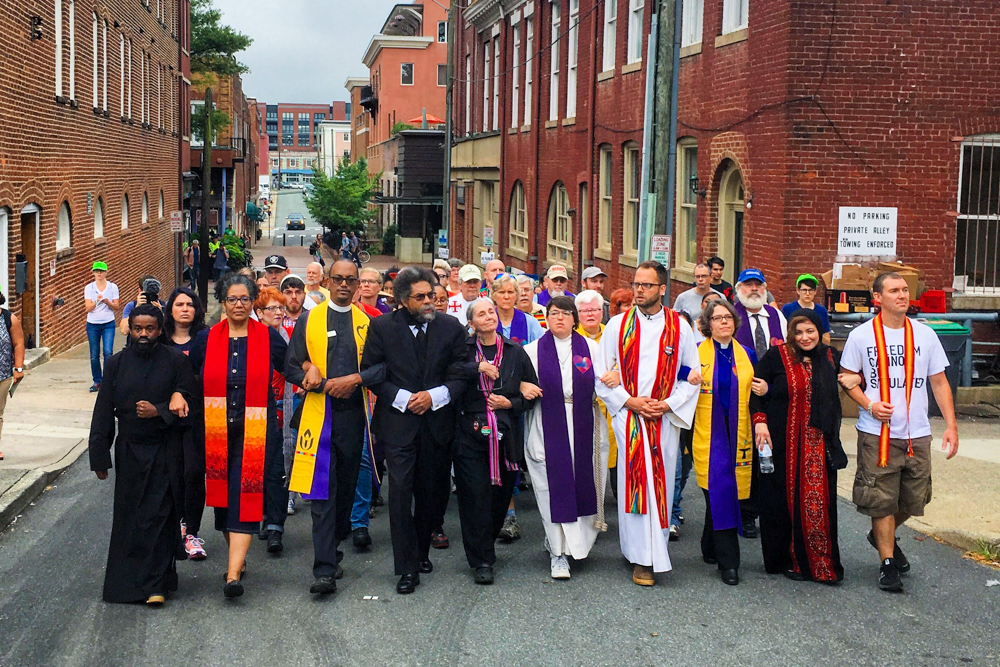Nation-wide fear, hostility, and anger peaked on August 11th and 12th 2017, when activists, including white supremacists and counter-protestors, violently clashed at the ‘Unite the Right’ rally in Charlottesville, Virginia. In part, the white supremacist and neo-Nazi groups came out to protest and rally against the removal of the Robert E. Lee statue, one of the city’s Confederate monuments. The rally also attracted anti-racists counter-protesters including students, clergy, non-profit organizations and concerned citizens. The results were deadly, 3 deaths and 33 injuries in total, including counter protester Heather Heyer who was killed when a white supremacist drove a car over her, and two police officers who died in a helicopter crash while assisting with public safety. These violent events in Charlottesville remind us of the need for nonviolent direct action training, which adamantly opposes injustice and nurtures a culture of peace.
After Charlottesville, we can choose to respond with anger and violence or with hope and strategic action. As an aspiring peacebuilder, I understand the practical pitfalls and moral contradictions of choosing violence. I know I can equip myself with tools to restore social relations through grassroots organizing that furthers the vision of truth-telling, healing, reconciliation, and restorative justice. Sociologist Johan Galtung, a founder of the field of peace & conflict studies, asserted that a culture of violence, which encompasses structural and direct forms of violence, must be countered by a culture of peace which nurtures structural peace and direct peace. When faced with violent groups, like the white supremacists in Charlottesville, we must respond with individual and collective acts of resistance to violence and initiatives for peace and justice. A recent training at EMU provided tools to the EMU community for nonviolent direct action and initiatives for a holistic peace.
The training was conducted by Beautiful Trouble, a group of artist-activists and trainers who believe in grassroots organizing and have educated thousands of activists in strategic skills for creative and effective nonviolent direct action that blends art and politics. Personally, the training brought a sense of reflection and rejuvenation. The training provided helpful tips to de-escalate confrontations when engaging in direct action that is likely to escalate into violence. We were challenged to consider our values, motives, and attitudes toward social change and to examine our own comfort, capacities, and roles as social activists.
I can attest that this training rejuvenated my dedication to a lifelong engagement in social change and direct action. The need for change is evident and we must lead it! Instead of dwelling on the disheartening violence and injustice that burdens our nation, we must initiate spaces that inspire hope, justice, and social change. Let us be reminded that even in the struggle for freedom and justice, we can be activists who respond with creative, effective, and nonviolent direct action that nurtures a culture of peace within our own communities.
If you are curious about the artists-activists at Beautiful Trouble and want to learn more about nonviolent direct action, check out Andrew Boyd and Dave Oswald Michell’s book, Beautiful Trouble and watch this entertaining video of their book launch party.
Anna Messer is in the accelerated BA to MA Peacebuilding & Development program at Eastern Mennonite Univerity and the Center for Justice and Peacebuilding.
Photo of clergy, including EMU alumni, marching on Aug. 12 in Charlottesville, Virginia to counterprotest the Unite the Right Rally by Jordy Yager.
